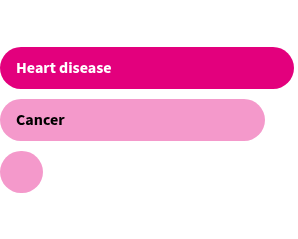Which states have the highest and lowest life expectancy?
Hawaii's life expectancy was 79.9 years, followed by Massachusetts at 79.6 years and Connecticut at 79.2 years.
From 2022 to 2023, life expectancy across the United States rose from 77.5 to 78.4 years, according to final death data from the Centers for Disease Control and Prevention (CDC).
But what exactly does life expectancy mean? And how does it vary by state?
How does the government define life expectancy?
Life expectancy — also called life expectancy at birth — is a projection of what the average age of death will be for people born today. The estimate is based on age-specific death rates reported in the year of birth.
Note that life expectancy is not the same as the average age of death and the death rate. The average age of death in the US is calculated using the ages of every person who died in a given year. Meanwhile, the death rate is based on the proportion of people who died in a specific year.
Where is life expectancy highest and lowest?
The state with the highest life expectancy at birth is Hawaii. In 2021, its life expectancy was 79.9 years, followed by Massachusetts at 79.6 years and Connecticut at 79.2 years.
Two states — New York and New Jersey — are tied for fourth place, each with a life expectancy of 79 years.
On the other hand, Mississippi has the lowest life expectancy across all states at 70.9 years, a decrease of one year since 2020. It’s followed by West Virginia and Alabama, with life expectancies of 71 years and 72 years, respectively.
Notably, most states with lower life expectancies were in the South, whereas states with higher life expectancies were mostly in the West and the Northeast. Lower life expectancy is also more prevalent among non-Hispanic Black Americans, low-income populations, and people with low levels of educational attainment, according to the NCHS.

Why has life expectancy increased?
One of the major factors that led to the increase in life expectancy in 2023 was the decrease in deaths from COVID-19 .
The numbers of deaths attributed to COVID-19 decreased 73.2% from 186,552 in 2022 to 49,932 in 2023. From 2022 to 2023, COVID-19 dropped from the fourth leading cause of death to the tenth, and overall life expectancy increased 0.9 years.
The top three leading causes of death in the US in 2023 were the same as 2022: heart disease, cancer, and accidental injuries. From 2023 to 2023, the age-adjusted death rates dropped by 3.0% for heart disease, 0.4% for cancer, and 2.7% for unintentional injuries.
Learn more from USAFacts about the leading causes of death in the US and get the data directly in your inbox by signing up for our newsletter.
Keep exploring
Page sources
Centers for Disease Control and Prevention (CDC)
U.S. Life Expectancy by State and Sex for 2021
Centers for Disease Control and Prevention
Mortality in the United States, 2023
